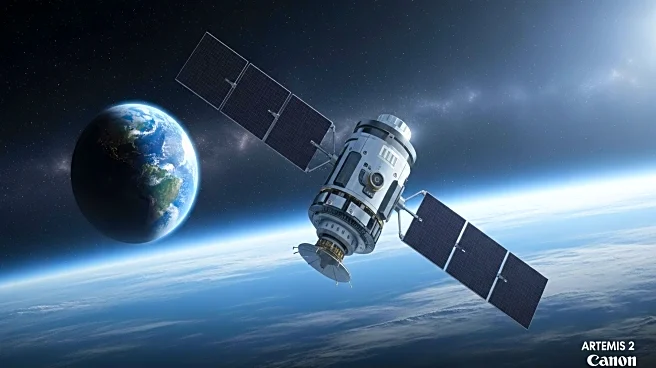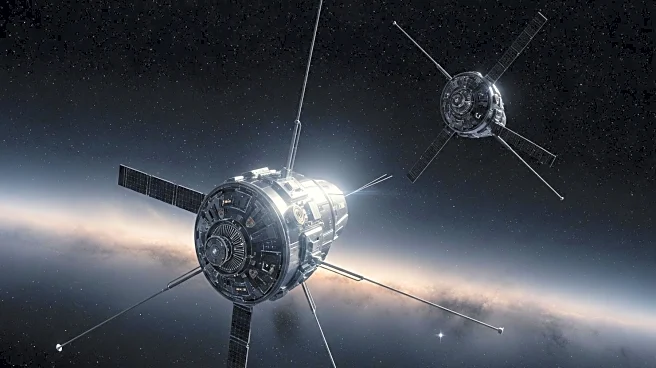What's Happening?
NASA has initiated the commissioning of its Polylingual Experimental Terminal (PExT), a pioneering space communications demonstration. Launched on July 23, the PExT is hosted on York Space Systems' Bard satellite. The commissioning process involves verifying the satellite's ability to send commands and receive data, ensuring that key systems like flight computers and navigation controls are operational. The PExT aims to demonstrate the capabilities of wideband terminals, which utilize software-defined radios to dynamically switch frequencies for data transmission. This technology, developed by NASA's Space Communications and Navigation (SCaN) Program and the Johns Hopkins Applied Physics Laboratory, promises to enable seamless communication across government and commercial satellite networks. Historically, NASA's missions relied on the Tracking and Data Relay Satellite (TDRS) system for near-Earth communication. However, with a shift towards commercializing space communications, NASA plans to acquire relay services from commercial providers, necessitating the development of interoperable wideband technology.
Why It's Important?
The PExT demonstration is significant as it represents a shift in NASA's approach to space communications, moving towards a more commercialized and interoperable model. This development could lead to more efficient and cost-effective communication solutions for future space missions. By enabling spacecraft to 'roam' between different networks, similar to how cell phones operate on Earth, NASA can ensure uninterrupted communication services. This capability is crucial for the success of future missions, particularly as the agency expands its partnerships with commercial entities. The successful implementation of wideband technology could also set a precedent for other space agencies and commercial operators, potentially leading to a more integrated global space communications infrastructure.
What's Next?
As the PExT payload commissioning continues through September, NASA will focus on testing the terminal's ability to transmit data while switching between various networks, including NASA's TDRS fleet, SES Space & Defense's O3b mPOWER network, and Boeing's services on Viasat's Global Xpress network. The outcomes of these tests will inform NASA's future strategies for space communications and its collaborations with commercial providers. The success of PExT could accelerate the adoption of wideband technology in upcoming missions, enhancing the agency's ability to support a diverse range of scientific and exploratory endeavors.











